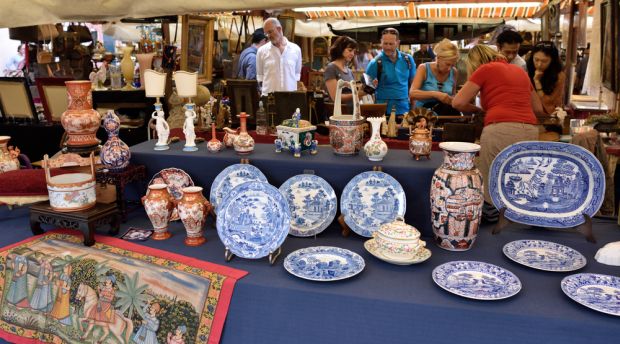What it is Like Being an Antiques Dealer and How to Become an Antiques Dealer
Post Views 2An antiques dealer buys and sells antiques: Art, furniture, jewelry, books, rugs, clothing, or any other item that can survive the ravages of time. While some dealers earn specific titles specializing in one type of relic, many are generalists who examine pieces of any type with historic, aesthetic, and financial value. “It is difficult to describe the life of an antiques dealer,” wrote one of our respondents, “because it involves so many things. An antiques dealer must know the pieces they sell . . . the clients they sell to . . . [and how to] manage their offices [and] . . . their finances.” It is difficult to become and remain an antiques dealer. Few professions require participants to exhibit such a diverse range of skills. The profession provides high levels of satisfaction at all levels for those people who are interested in history, business, psychology, and aesthetic concerns. The joys of being surrounded daily with items of financial and historical value seem to buoy many people through the long hours, the paucity of compensation, and the difficulty of achieving independence from established dealers. Many respondents had nothing but high praise for their coworkers. One referred to them as “a good resource, both intellectually and emotionally.”
Antiques dealers invest substantial capital in inventory. The high level of investment means a high degree of risk and great pressure on the dealer to assess carefully the value of items before purchase and to sell items purchased aggressively. The pressure for value on both ends can translate into pressure for those working in the industry; those who are unaware of this “results-based” operation of many antique houses are surprised at the importance of the bottom line in the business. The job of an antiques dealer requires a person to trust her own understanding of a piece’s value and put herself on the line every time she makes a decision. It is natural that betting on your own skills would create worry. People mentioned that if you make a mistake in overpaying for a piece, you can often “sell your way out of it,” if you have the customer skills. Successful dealers rarely try to take advantage of long-term customers, however. Those relationships are based on trust.
Paying Your Dues
A variety of undergraduate degrees lend themselves to becoming an antiques dealer, but no specific major is required. Art history majors enjoy the interaction with beautiful works; business students appreciate the investment and dealing aspects of the profession; history majors love the continuous education the job represents. Becoming an antiques dealer requires spending long hours inspecting pieces, visiting other antiques dealers, reviewing documentation, and researching histories. Most aspiring antiques dealers begin as interns at auction houses or at the side of established professionals and learn as assistants, take care of correspondence, make research trips to the library, and schedule appointments. An attention to detail serves the prospective antiques dealer well, as deciding the value of a piece–the most difficult aspect of being a dealer–can hinge upon a slight detail. Graduate work is less important than practical experience, and specialization can begin either midway through or late in a dealer’s career.
Associated Careers
Antiques dealers work with restorers, financiers, and auction houses regularly, and when they leave the profession of antique dealing (as many do) they enter these three fields more than any others. Some become professional valuation specialists, working with auction houses and other antiques dealers as appraisers. A small number of ex-antiques dealers become teachers and lecturers in graduate fine arts programs.
Past And Future
Antiques dealers before the seventeenth century were more closely associated with archaeology, as craftsmanship of prior pieces was less interesting compared with the artisanship, patterning, and construction of artifacts from different and ancient civilizations. Beginning in the seventeenth century, though, craftsmanship emerged as the favorite means of wealthy home beautification, and this demand spurred the production of high-quality, aesthetically pleasing pieces of furniture. Within seventy years, these pieces were being sold as antiques or “specialty items.”
Antique sales are one of the recession-insensitive industries, proving even more active during years of financial lassitude. Those who aspire to become part of this industry should understand that most successful antiques dealers have to have a “critical mass” of audience (client base) to make the profession self-supporting. As a result, urban or suburban antiques dealers do better than rural ones, and that trend is expected to continue.
Quality of Life
Two Years Out
Two years into the profession, antiques dealers are usually working alongside an established professional, learning inventory systems, bookkeeping methodology, and payment schedules. Many assist with client contact and valuation decisions, learning the less quantifiable aspects of the profession. The hours are long and the pay is low, but the responsibility levels–in terms of inventory management and presentations–is high. A number of new dealers take art history, history, and appraisal courses.
Five Years Out
The majority of five-year antiques dealers have switched positions at least once during these middle years, either to learn different specialties, gain greater responsibilities, or work in a larger client community. Eight percent return to school to receive their MBAs. Most antiques dealers network with other professionals and seek out areas of opportunity during this time. Few open their own shops at this juncture; good connections are difficult to establish.
Ten Years Out
Ten-year veterans begin to assemble the pieces they will need to open their own shops. In many cases, that means making a bid to their current employer. One respondent mentioned that “over 90 percent of dealers think about opening their own shop, but only about 40 percent do it.” This yen for independence is expected at this stage in a career. Contacts have been established, experience is strong, and dealers have matured, learning the tangible and intangible aspects of the industry. Salaries do not rise beyond this point unless people open their own shops, which encourages the mass exodus to self-employment. Of the new dealers, only around 25 percent are around after eighteen months.
Professional Profile
| # of people in profession | 124,200 |
| % male: | 70 |
| % female: | 30 |
| average hours per week: | 40 |
Professionals Read
Antiques Magazine
American Antiques
Art and Antiques
Books, Films and TV Shows Featuring the Profession
Dead Again
The Old Shoppe
Masquette
Major Employers
| Christie’s 502 Park Avenue New York, NY 10022 Tel: 212-546-1000 |
Sotheby’s 1334 York Avenue New York, NY 10021 Tel: 212-606-7000 Fax: 212-606-7028 |
Discovery Emporium 448 Amsterdam New York, NY 10024 Tel: 212-595-4410 Fax: 212-595-4384 |
You’ll Have Contact With
Appraisers
Art Historians
Auctioneers
Restorers



 Fashion Editor Jobs Are Hard to Find So Look at Your Options
Fashion Editor Jobs Are Hard to Find So Look at Your Options  How to Get a Job on a Cruise Ship: What it is Like Working on a Cruise Ship
How to Get a Job on a Cruise Ship: What it is Like Working on a Cruise Ship  7 Jobs for People Who Want to Work in Tech but Aren’t an Engineer
7 Jobs for People Who Want to Work in Tech but Aren’t an Engineer  Becoming an Art Dealer: What it is Like Having a Career as an Art Dealer
Becoming an Art Dealer: What it is Like Having a Career as an Art Dealer  What Does a Medical Laboratory Technician Do?
What Does a Medical Laboratory Technician Do?  How to Ace a Dental Hygienist Interview
How to Ace a Dental Hygienist Interview  Jobs That Allow You to Work Remotely
Jobs That Allow You to Work Remotely  If You Love Halloween Consider These 6 Jobs
If You Love Halloween Consider These 6 Jobs